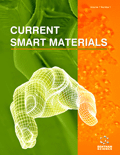Abstract
Background: Acid hydrolysis of cellulose fibers yields highly crystalline rod like particles (cellulose nanocrystals, CNCs) which have many interesting properties including their exceptional strength, high surface area, ease of functionalization, and self-assembly properties that have driven research in various directions. To the best of our knowledge, for the first time it was shown that adsorption of a direct dye onto CNCs in aqueous NaCl solution results in an amorphous vitreous substance.
Methods: TEM, DLS, FTIR, TG, X-ray diffraction, elemental and mass spectrometric analyses.
Results: Two CNCs-based samples were prepared by casting-evaporation technique, namely by adding Congo Red (CR) to the CNCs dispersion (Sample 1) and by addition of CR and sodium chloride to the CNCs dispersion (Sample 2). The samples were investigated by FTIR, X-ray diffraction and thermal property analyses.
Conclusions: The dried Sample 1 was a dyed film, while the dried Sample 2 was a colored glassy substance. The properties of the Sample 1 were similar to properties of the neat CNCs. The properties of the Sample 2 were quite different. Such an amorphous vitreous substance is stable when stored and decomposed by heating with water release.
Keywords: Cellulose nanocrystals, congo red, nanocomposite, functional material, hydrolysis, FTIR, x-ray diffraction .
Graphical Abstract
 21
21


